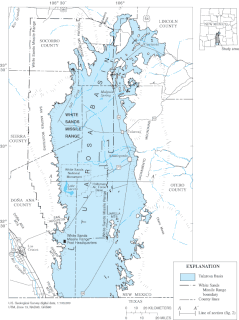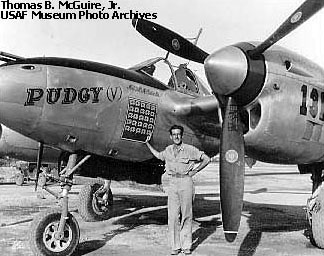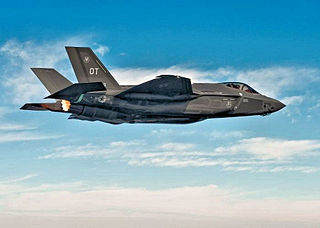| 53d Weapons Evaluation Group | |
|---|---|
 BQM-167 Streaker of the group's 82d Aerial Targets Squadron | |
| Active | 1943–1949; 1955–1958; 1983–1998; 1998–present |
| Country | |
| Branch | |
| Role | Weapons Evaluation |
| Nickname(s) | Satan's Angels (World War II) |
| Motto(s) | In Proelio Gaudete Latin Be Joyful in Battle [1] |
| Engagements | Asiatic-Pacific Theater |
| Decorations | Distinguished Unit Citation Air Force Outstanding Unit Award Air Force Organizational Excellence Award Philippine Presidential Unit Citation |
| Commanders | |
| Notable commanders | Colonel Charles H. MacDonald Lieutenant Colonel (later Colonel) John S. Loisel |
| Insignia | |
| 53d Weapons Evaluation Group emblem [note 1] | 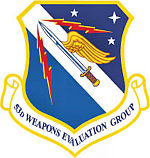 |
| 475th Fighter Group emblem (Approved 26 November 1956) [1] |  |
The 53d Weapons Evaluation Group is a United States Air Force unit that reports to the 53d Wing. It is stationed at Tyndall Air Force Base, Florida. The unit is part of Air Combat Command.

The United States Air Force (USAF) is the aerial and space warfare service branch of the United States Armed Forces. It is one of the five branches of the United States Armed Forces, and one of the seven American uniformed services. Initially formed as a part of the United States Army on 1 August 1907, the USAF was established as a separate branch of the U.S. Armed Forces on 18 September 1947 with the passing of the National Security Act of 1947. It is the youngest branch of the U.S. Armed Forces, and the fourth in order of precedence. The USAF is the largest and most technologically advanced air force in the world. The Air Force articulates its core missions as air and space superiority, global integrated intelligence, surveillance, and reconnaissance, rapid global mobility, global strike, and command and control.
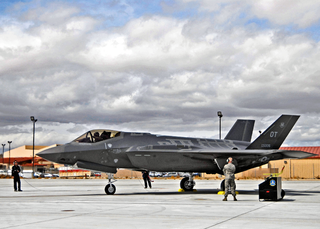
The 53d Wing is a wing of the United States Air Force based at Eglin Air Force Base, Florida. The wing reports to the United States Air Force Warfare Center at Nellis Air Force Base, Nevada, which reports to Headquarters Air Combat Command.

Tyndall Air Force Base is a United States Air Force Base located 12 miles (19 km) east of Panama City, Florida. The base was named in honor of World War I pilot 1st Lt. Frank Benjamin Tyndall. The base operating unit and host wing is the 325th Fighter Wing of the Air Combat Command (ACC). The base is delineated as a census-designated place and had a resident population of 2,994 at the 2010 census.
Contents
- Overview
- Units
- History
- World War II
- Occupation
- Cold War
- Modern era
- Lineage
- Assignments
- Components
- Stations
- Aircraft
- Awards and campaigns
- See also
- References
- Explanatory notes
- Citations
- Bibliography
- External links
During World War II the unit, then known as the 475th Fighter Group, operated primarily in the Southwest Pacific Theater. The 475th Fighter Group was perhaps the best known of the Lockheed P-38 Lightning groups in the theater since it contained among its personnel the top scoring flying aces in the Pacific--Richard I. Bong (40 kills) and Thomas B. McGuire, Jr. (38 kills), both Medal of Honor recipients.

World War II, also known as the Second World War, was a global war that lasted from 1939 to 1945. The vast majority of the world's countries—including all the great powers—eventually formed two opposing military alliances: the Allies and the Axis. A state of total war emerged, directly involving more than 100 million people from over 30 countries. The major participants threw their entire economic, industrial, and scientific capabilities behind the war effort, blurring the distinction between civilian and military resources. World War II was the deadliest conflict in human history, marked by 50 to 85 million fatalities, most of whom were civilians in the Soviet Union and China. It included massacres, the genocide of the Holocaust, strategic bombing, premeditated death from starvation and disease, and the only use of nuclear weapons in war.

The Lockheed P-38 Lightning is a World War II–era American piston-engined fighter aircraft. Developed for the United States Army Air Corps, the P-38 had distinctive twin booms and a central nacelle containing the cockpit and armament. Allied propaganda claimed it had been nicknamed the fork-tailed devil by the Luftwaffe and "two planes, one pilot" by the Japanese. The P-38 was used for interception, dive bombing, level bombing, ground attack, night fighting, photo reconnaissance, radar and visual pathfinding for bombers and evacuation missions, and extensively as a long-range escort fighter when equipped with drop tanks under its wings.

A flying ace, fighter ace or air ace is a military aviator credited with shooting down several enemy aircraft during aerial combat. The actual number of aerial victories required to officially qualify as an ace has varied, but is usually considered to be five or more.
By the war's end, no fewer than 38 other pilots from the 475th had achieved ace status while flying exclusively P-38s. The group's commander for 20 months, Colonel Charles H. MacDonald, scored 27 kills in his famous aircraft, the "Putt Putt Maru" and was the seventh-ranking American ace.
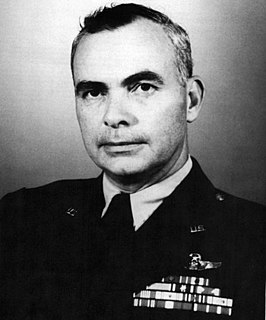
Colonel Charles Henry "Mac" MacDonald was a United States Air Force officer and a fighter ace of World War II. MacDonald commanded the 475th Fighter Group for 20 months in his P-38 Lightning, "Putt Putt Maru", and become the third ranking fighter ace in the Pacific during World War II.
The group remained in the Far East until 1949 as part of the occupation forces.
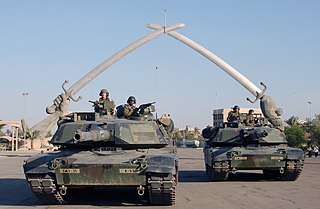
Military or belligerent occupation is effective provisional control by a certain ruling power over a territory, which is not under the formal sovereignty of that entity, without the violation of the actual sovereign. The territory is then known as the occupied territory and the ruling power the occupant. Occupation is distinguished from annexation by its intended temporary nature, by its military nature, and by citizenship rights of the controlling power not being conferred upon the subjugated population.
From 1955 to 1956 the group was an Air Defense Command interceptor group, stationed at Minneapolis-St Paul International Airport. It was inactivated in 1958 when the United States Air Force withdrew its regular units from this civilian field.
As the 475th Weapons Evaluation Group, then the 53d Weapons Evaluation Group, the group has performed its current mission at Tyndall since 1983.

